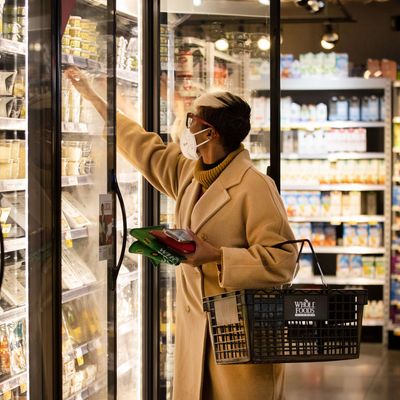
There’s a new high-water mark for the Biden administration’s monthslong season of inflation. The Consumer Price Index, the federal government’s report on price changes, rose 7.5 percent in January from a year ago, according to a report released Thursday morning by the Labor Department. The index was driven up by a surprisingly high monthly spike in the price of fuel oil, shelter, and groceries, staples of most consumers’ spending. It’s another month of 40-year highs, the ninth straight month CPI has risen above 5 percent — a rate that hasn’t been seen since before the Great Recession.
The report shows that the efforts so far to fight inflation aren’t working, and portends that the Federal Reserve is running out of options to manage it before it goes on for too long. It’s been gospel on Wall Street that the central bank is set to announce it will hike interest rates at its meeting next month — the question was by how much, and for how long that would continue for. When the Fed hikes rates, it sucks money out of the financial system. That means less money for businesses to hire, less money to spend on the things whose prices are rising anyway. The Fed will also start selling off the debt securities it bought up during the pandemic, effectively pushing up rates even more by increasing the amount of risk in the system. Considering that the most recent jobs report showed that the state of hiring was finally approaching pre-pandemic levels, the economy is actually in pretty good shape. Fed chairman Jerome Powell has warned that inflation could tank that recovery, and now it seems more likely than ever that he’s going to have to move more aggressively than any of his predecessors since Alan Greenspan. But could it be too late?
“It’s possible that the actions available to them — raising interest rates and reducing their balance sheet — are not sufficient to tame the type of inflation that we are experiencing now and that’s why they are in such a difficult position and risks for markets are much higher than are currently being priced in,” said Chris Zaccarelli, chief investment officer for Independent Advisor Alliance, in a research note.
There were some surprises in the index’s data, considering other economic news that’s come out recently. It’s not lost on anybody that food prices have been rising, but the focus has been on companies like Chipotle and McDonald’s, who’ve found that asking more out of their customers’ wallets hasn’t been a problem. Tracy Alloway at Bloomberg News pointed out that, in fact, the more companies raise prices and fatten their margins, the more they’re getting rewarded by Wall Street, suggesting that the excess in the economy here is in people’s bank accounts. What’s surprising about this CPI report is that the big jump in January was in grocery prices — what you pay when you don’t go out to eat. That means that, on average, your grocery bill for the same stuff rose a full percentage point just during the month of January, for a 7.4 percent total increase over the year. The rate of increases had been falling since September, then spiked up even faster. So while prices at restaurants have increased, they’re not rising as fast, meaning that you might be getting more bang for your buck by going out to get a burrito than by staying in and making one, at least when you factor in all the conveniences that come along with it. Considering that hiring and wage increases in the service sector are driving the booming labor market, restaurants are probably trying to keep costs down just to lure consumers out of the house.
In fact, when you take a look at what’s driving up consumer prices, it’s the stuff that keeps people home: electricity, heating, groceries. (Gas utilities declined, but fuel oil is by far more popular than any other option.) Of course, it’s the winter, so people are spending more time home anyway, but it’s also a sign that price increases are sloshing around depending on the level of COVID-19 cases. In the summer, when cases weren’t so bad and people were out and about, rental-car prices were up. During the peak of the Omicron surge, the price increases migrated into the home.
The turnaround shows that the supply-chain issues that the Biden administration have been trying to ease are still not resolved, months after getting ports to stay open longer. Economists such as Larry Summers have been arguing against that, saying that the real problem is consumer demand, fueled by more money from the federal government. It’s a weird argument to make: Wages for nonsupervisory employees, the bulk of the U.S. workforce, have only risen 5.4 percent during the last year. And while the biggest wage increases are happening for workers in leisure and hospitality — restaurant workers, for instance — the 15 percent annual increase they’ve seen still only brings them to about $420 a week on average, easily the lowest-paid sector of the workforce. How long are we going to blame stimulus checks that got delivered last spring?
On balance, where does this leave the economy? As my colleague Eric Levitz points out, things are actually pretty good. Most people’s finances are in order. Layoffs are sparse (unless, I guess, you work for Peloton), and there are still more jobs than there are people willing to work them. The end of mask mandates and cratering COVID cases point to things eventually looking more like pre-pandemic times, in terms of going out and spending. The Fed might very well have some leeway to cool the economy to keep prices from getting too hot. But if Powell has to move abruptly — as he’s increasingly likely to do — the jobs could dry up, wages could flatten, and with goods likely to stay expensive for some time, there could be a dwindling number of ways to pay for them.






























